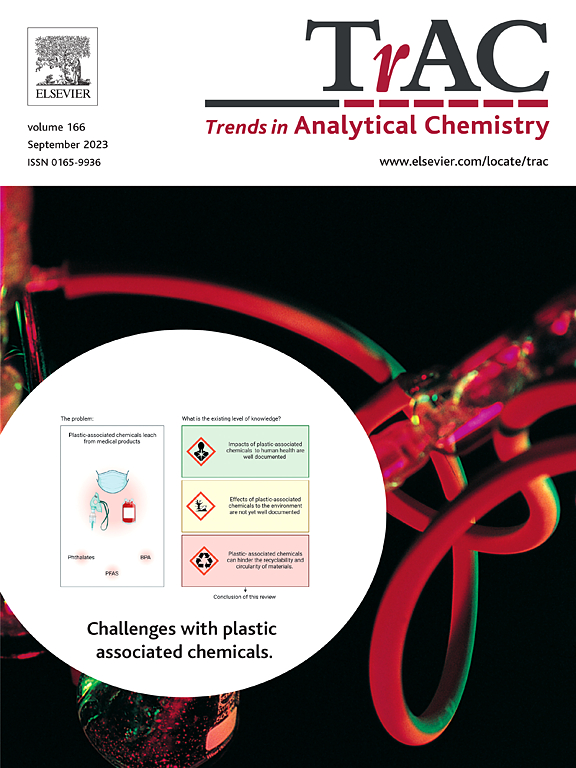Use of living systems for clinical diagnostics by monitoring volatile chemicals
IF 11.8
1区 化学
Q1 CHEMISTRY, ANALYTICAL
引用次数: 0
Abstract
Volatile organic compounds (VOCs) emitted via exhaled breath and bodily fluids are indicative of a diseased state within the body and have the potential to be used as a diagnostic tool. The study of VOCs in disease detection is a concept that has seen excellent engineering progress recently, namely via developments of electronic noses that aim to replicate biological olfactory principles through cross-selective electrode arrays and sensors. However, there has yet to be an engineered device that can capture the full breadth, sensitivity, and versatility of biological olfaction. This review summarizes common principles in biological olfaction and provides an overview of recent techniques to incorporate living systems for VOC detection. We discuss the recent advances, strengths, and weaknesses of all three types of living systems-based disease detection approach, which include a) olfactory behavioral detection, b) bioelectronic noses and c) ‘cyborg’ biosensors for disease detection.
通过监测挥发性化学物质将生物系统用于临床诊断
通过呼出的气体和体液释放出的挥发性有机化合物(VOCs)可指示体内的疾病状态,并有可能用作诊断工具。在疾病检测中研究挥发性有机化合物这一概念,最近在工程学方面取得了卓越的进展,即开发出了电子鼻,旨在通过交叉选择电极阵列和传感器复制生物嗅觉原理。然而,目前还没有一种工程设备能完全捕捉到生物嗅觉的广度、灵敏度和多功能性。本综述总结了生物嗅觉的常见原理,并概述了将生物系统用于检测挥发性有机化合物的最新技术。我们讨论了所有三种基于活体系统的疾病检测方法的最新进展、优缺点,其中包括 a) 嗅觉行为检测、b) 生物电子鼻和 c) 用于疾病检测的 "半机械人 "生物传感器。
本文章由计算机程序翻译,如有差异,请以英文原文为准。
求助全文
约1分钟内获得全文
求助全文
来源期刊

Trends in Analytical Chemistry
化学-分析化学
CiteScore
20.00
自引率
4.60%
发文量
257
审稿时长
3.4 months
期刊介绍:
TrAC publishes succinct and critical overviews of recent advancements in analytical chemistry, designed to assist analytical chemists and other users of analytical techniques. These reviews offer excellent, up-to-date, and timely coverage of various topics within analytical chemistry. Encompassing areas such as analytical instrumentation, biomedical analysis, biomolecular analysis, biosensors, chemical analysis, chemometrics, clinical chemistry, drug discovery, environmental analysis and monitoring, food analysis, forensic science, laboratory automation, materials science, metabolomics, pesticide-residue analysis, pharmaceutical analysis, proteomics, surface science, and water analysis and monitoring, these critical reviews provide comprehensive insights for practitioners in the field.
 求助内容:
求助内容: 应助结果提醒方式:
应助结果提醒方式:


